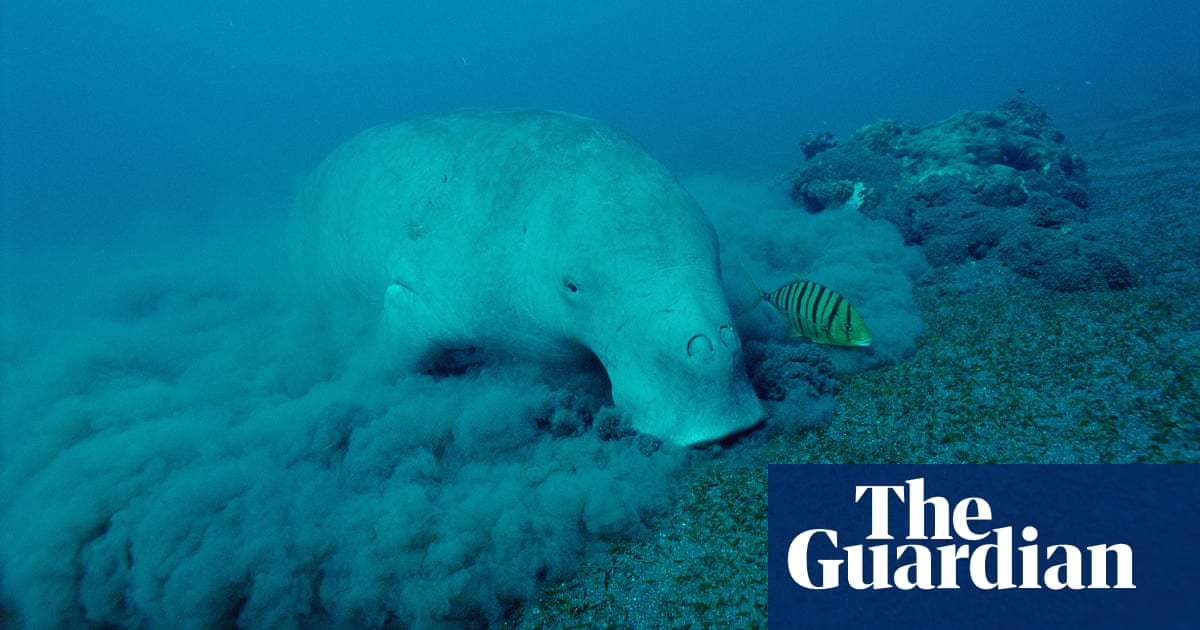‘We rarely see them now’: just how vulnerable are Vanuatu’s dugongs? | Global development

On a bright spring day, the sun dances over the water of Havannah Bay on the island of Efate in Vanuatu. Below the surface, pockets of seagrass that can just about be seen from the shoreline, sway in the current. It’s here, if they are lucky, that onlookers may spot a dugong bobbing in the shallow water, orbiting the seagrass meadows they feed on.
“It’s wonderful seeing them swimming by and grazing off the seagrass in front of the resort,” says Greg Pechan, the owner of a local hotel, the Havannah, which sits at the tip of the bay. Pointing out beyond the jetty that stretches into the Pacific Ocean, he says Vanuatu’s sea life is a big attraction for visitors to the Melanesian country.
Light grey in colour, dugongs, sometimes known as “sea cows” and whose closest relatives are freshwater manatees, can grow up to four metres long and weigh up to 400kg (900lb). They are a “friendly species” and respected by islanders, says Heidi Joy, a marine science student from Efate.
A few years ago, it would not be unusual for Joy, who lives close to Havannah Bay, to spot a dugong in the morning and then again at sunset. That has since changed, she says. “We rarely see them now.”
Dugongs are considered vulnerable to extinction by the International Union for Conservation of Nature. The exact number roaming Vanuatu’s waters is, however, unknown and this uncertainty is hindering conservation efforts, experts say.
“A lot of studies have been done where you’ve got large populations of dugongs in large seagrass meadows [such as] Australia or Abu Dhabi, but we’ve got a different dugong population. We’ve got small groups or individuals,” says Christina Shaw, the CEO of the Vanuatu Environmental Science Society.
She says that a national assessment of dugongs and seagrass in Vanuatu is urgently needed so it is clear just how many there are, where they are and if they are suffering in the same way as in other parts of the region.
In 2023, the status of neighbouring New Caledonia’s population was downgraded to “endangered” while east African dugongs have become “critically endangered”. “In those two areas, there is enough information to do a regional assessment,” says Shaw.
In Vanuatu, however, only one aerial survey – in 1987 – has been carried out to assess the national distribution, abundance, cultural importance and threats, according to Helene Marsh, an emeritus professor in environmental science at James Cook University.
Dugongs globally are threatened by gill-net fishing, boat traffic, coastal development and hunting.
In Vanuatu, dugong meat used to be considered a source of protein, their oil used for cooking and other parts whittled into handicrafts.
But since the 1980s, certain islands have introduced local prohibitions known as tabu, which mandates their protection. In 2010 the government also signed the Convention on Migratory Species’ dugong memorandum of understanding, committing it to protecting the sea cows and the seagrass they eat. This means hunting is now rare, says Shaw.
after newsletter promotion
Instead, another predator threatens the dugong: the climate crisis. On a spring evening in Efate, rain hammers relentlessly until nightfall, rendering the ocean a murky green. It’s downpours such as this, becoming more common, alongside storms and cyclones, that damage the seagrass so vital to the dugongs.
Vanuatu sits in the Pacific “Ring of Fire”, a tectonic belt of volcanoes and earthquakes, and a tropical cyclone region, making it prone to disasters. When these batter the bays and beaches of Vanuatu, the seagrass is swept up by the heavy winds, while the rain and debris creates sediment on the water surface, smothering the seagrass from the sunlight it needs to thrive. It is estimated that 7% of the world’s seagrass is lost every year.
After twin cyclones Judy and Kevin hit in March 2023, the seagrass meadows in Havannah Bay were depleted.
Richard Leck, head of oceans at WWF Australia, says: “When that happens dugongs have no choice but to get on the move and sometimes they have to go into deeper water, expend much more effort to graze seagrass and when that happens they often get emaciated and lose condition really quickly.”
Since the cyclones, Joy says she rarely sees a dugong. On a boat across the bay to Moso Island, known to be frequented by dugongs, the waves give way to mangroves and none are spotted near the surface. They are seen on dive excursions, says Shaw, but “you do need to be lucky”.
As with dugongs, there is limited data on the prevalence and condition of seagrass in Vanuatu. This makes it hard, says Shaw, to advocate for investment in conservation. “Funders don’t like paying for studies,” she says. “But how do we do [conservation] if we don’t know what’s there?”
Source link




